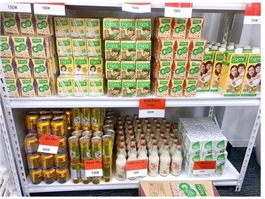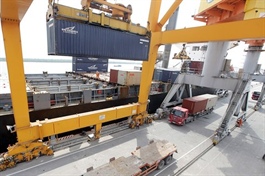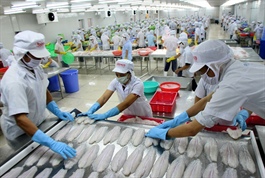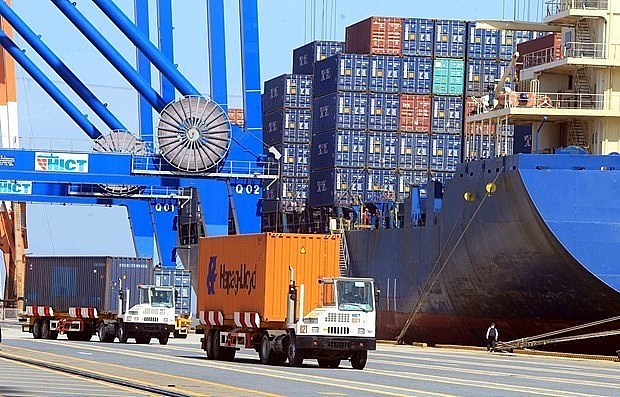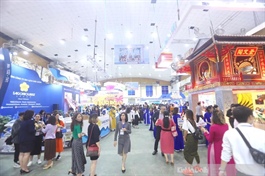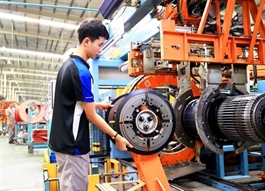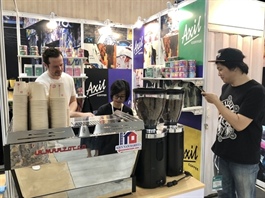Rules paradox hinders plans for EU exports
Rules paradox hinders plans for EU exports
Though the EU-Vietnam Free Trade Agreement will remove import tariffs for many export items into the EU, costs for access to this market are set to increase in addition to strict rules of origin, making it difficult for exporters to benefit from the deal’s advantages.
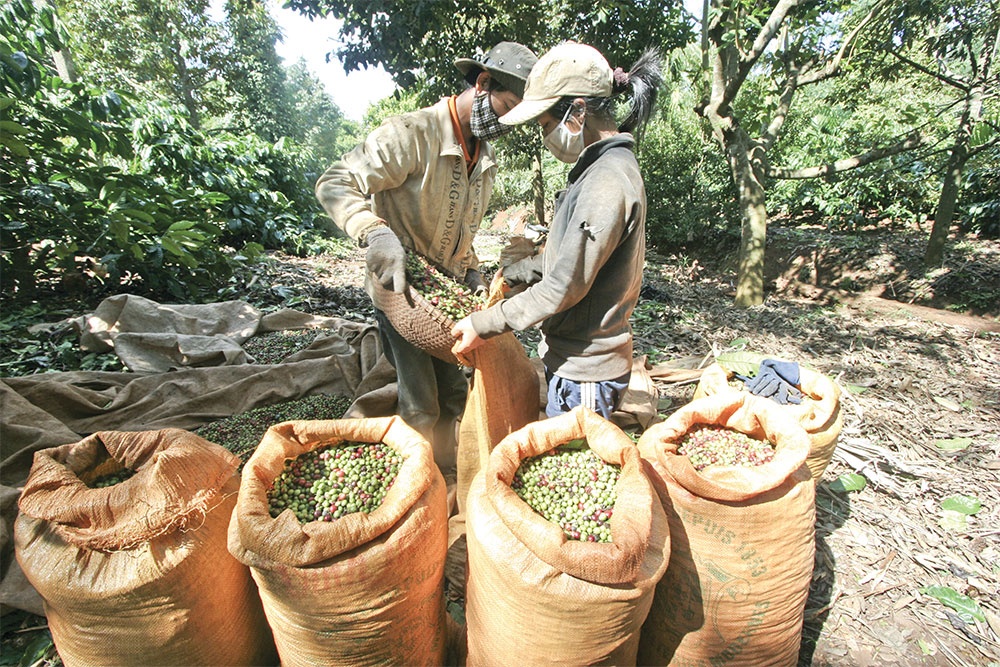
Starting this year, the European Union has begun to apply a series of regulations that may affect non-EU items imported into the market.
In January, the EU required all foreign business partners that import their goods into its territories to pay wider attention to issues such as labour and the environment. The EU also plans to apply new regulations on fighting against deforestation and achieving low carbon emissions in production activities.
These regulations will directly affect Vietnam’s export items such as coffee, furniture, steel, fertiliser, and chemicals.
The EU will also imminently apply a new regulation on environmental protection with a focus laid on reducing emissions from products in the garment and textile, footwear, and electronics sectors.
At the beginning of the year, the European Commission released regulations on the temporary increase in official controls and emergency measures governing the entry into the EU of certain goods from certain third countries. Under this new regulation, some Vietnamese products will be affected, including chilli and okra, which a quality examination frequency rate of 50 per cent.
“Various supply chain due diligence schemes already govern the placing of goods on the EU market, and new EU regulations are about to enter into force, like the Carbon Border Adjustment Mechanism and the Corporate Sustainability Due Diligence Directive,” Alexander Koch, chairman of the Dutch Business Association in Vietnam, told VIR.
“All of these schemes require exporters to be able to present documentary evidence upon request to demonstrate their compliance to sustainable environmental, social, and governance criteria. Investing in related reporting is essential for companies exporting from Vietnam to the EU or being in the supply chain of an EU company in order to enjoy low tariffs and easy access to EU markets,” Koch added.
Strict rules of origin
According to the Ministry of Industry and Trade, one of the greatest challenges for Vietnam to benefit from the EU-Vietnam Free Trade Agreement (EVFTA) tariff advantages is how to ensure factories perform under strict environmental standards, and ensure rules of origin (ROO) of products that are required under the deal.
Specifically, products will benefit from the tariff preferences under the EVFTA’s ROO provided that they can prove that they are wholly obtained in Vietnam, or produced in Vietnam incorporating materials which have not been wholly obtained there, provided that such materials have undergone sufficient working or processing within Vietnam.
However, while raw materials from Vietnam and goods produced here using domestic inputs easily fall into the wholly obtained category, many goods contain materials or components imported from countries not party to a trade agreement.
These goods must prove that the inputs that have been inputted have undergone specific levels of alteration within Vietnamese borders to tap into the benefits of the EVFTA. Many goods have set procedures that must be completed within Vietnam for the items in question to be considered as originating from there.
Vietnam exports its goods to the EU in many sectors. For example, the Vietnam Textile and Apparel Association (VITAS) said the sector is not worried about quality or standards, but about ROO difficulties surrounding the EVFTA.
“Opportunities to increase garment and textile exports to the EU to benefit from the EVFTA are there, but it will be difficult for the sector to meet ROO requirements because Vietnam’s clothing materials are largely imported from non-EU sources such as China, India, and South Asia,” said Truong Van Cam, vice chairman of the VITAS.
“Meanwhile, the EVFTA only offers preferences to Vietnamese garments and textiles which are produced domestically or imported from the economies that have an FTA with the EU such as South Korea, Singapore, Canada, or Japan.”
Vietnam’s garment and textile exports last year hit $44 billion, including about $4 billion from the EU. Total material imports in 2022 reached about $6.5 billion, up 8.5 per cent on-year. About 80 per cent of clothing materials were imported from foreign markets – in which half was from China, 15 per cent from Taiwan, and 18 per cent from South Korea.
Under the EVFTA commitments, all Vietnamese garments and textiles will enjoy a zero import tax rate seven years after the deal’s entry into force. Specifically, the EU will remove import tariffs for 77.3 per cent of Vietnam’s garments and textiles after five years, and the remaining 22.7 per cent will follow suit after the next two years.
On the rise
The EVFTA took effect in August 2020, and two-way trade turnover hit $54.9 billion in the first year of implementation – up 12.1 per cent on-year, and reaching $61.4 billion in the second year of implementation, up 11.9 per cent on-year.
The figure touched $62.4 billion in 2022, up from $56.8 billion in 2021 – with a significant rise in export turnover of many items such as garments and textiles (24 per cent), footwear (19 per cent), and aquatic products (41 per cent).
In the first three months of this year, the two-way trade value sat at $13.7 billion, down from $15.2 billion in the same period last year. However, this figure is expected to bounce back thanks to rising EU demand.
According to the Vietnamese Trade Office in Belgium, it is forecast that the EU-Vietnam two-way trade turnover will increase by about 24 per cent on-year in 2023.
Giorgio Aliberti, head of the European Union Delegation to Vietnam, told VIR that the EVFTA is serving as a major driver of trade.
“I firmly believe that the EVFTA has contributed significantly to this success and the figures speak for themselves. The latest available data sourced from Eurostat indicates a robust growth of the bilateral import-export relations in January-December 2022,” Aliberti said.
The exports of commodities by the EU to Vietnam soared up by 18 per cent on-year to €12.01 billion ($13 billion) while Vietnam’s exports rose significantly by more than 33 per cent on-year to €50.32 billion ($54.84 billion). Vietnam has well maintained its leading position as the biggest exporter of commodities among ASEAN countries to the EU market, Aliberti added.
He explained that the prospects of deeper bilateral trade between Vietnam and the EU remain bright.
“Two-way trade after two years of the EVFTA grew to $83.4 billion, representing 24 per cent higher than the average annual bilateral trade value during 2016-2019, before the deal came into play. The utilisation rate of the EVFTA by Vietnamese exporters continues to increase as well,” Aliberti said.
This utilisation rate was initially 14.8 per cent in 2020 and increased to 20 per cent in 2021 and to 24.5 per cent in the first six months of 2022, according to a survey of 500 Vietnamese companies by the Vietnam Chamber of Commerce and Industry.
“Many independent analysts hold the view that current global challenges could have wielded far worse impacts on the economy if important deals like the EVFTA had not been in place. It has acted as a cushion to support the economy of Vietnam in times of global turbulence,” Aliberti noted.





